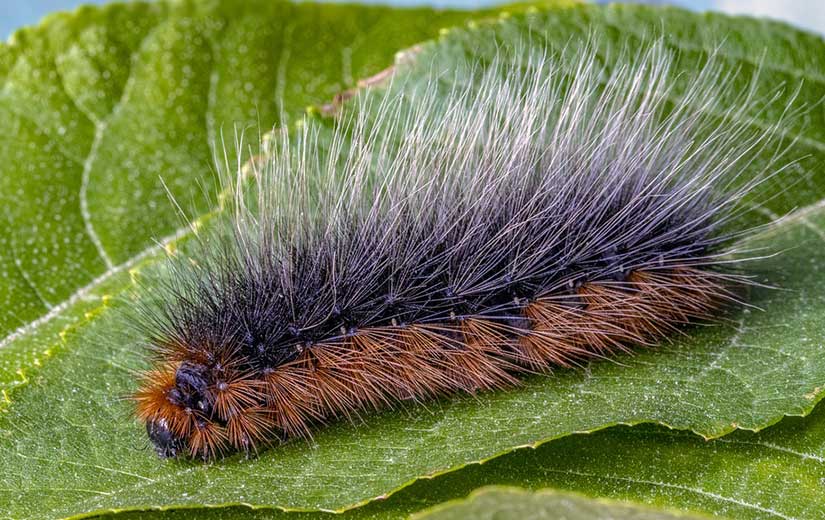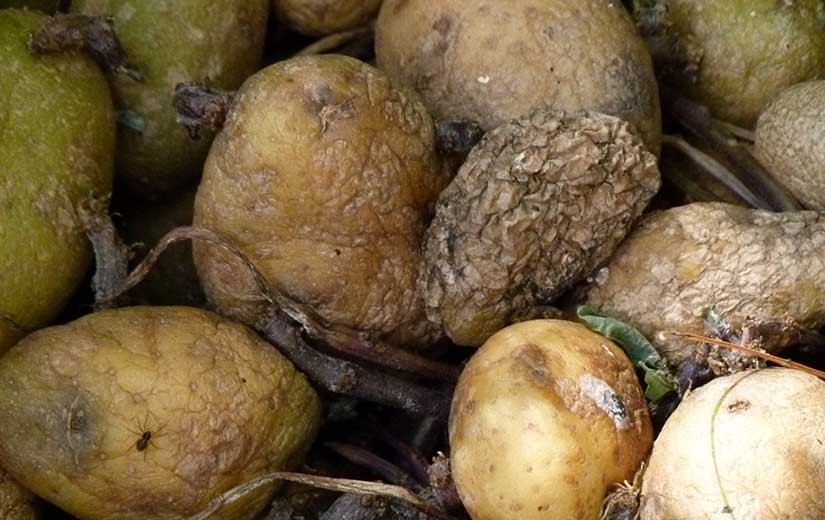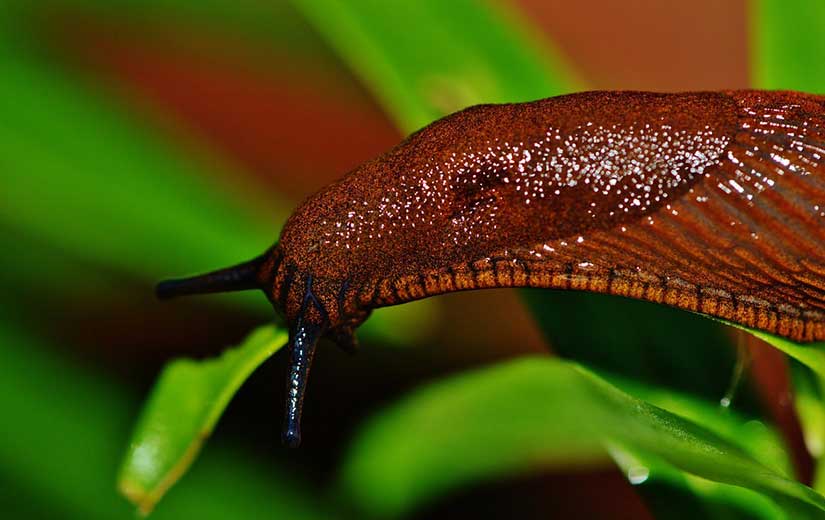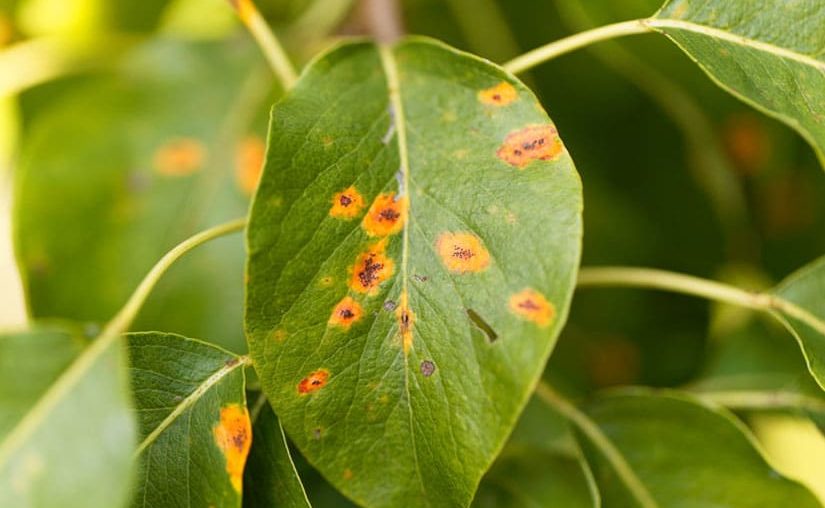Animals, and in the first place insects: aphids, mealybugs, flies, caterpillars, white grubs, etc., figure prominently among the enemies of the gardens. To this must be added some birds and rodents (rats and field mice, etc.).
Many diseases attack plants. Some are fungi: late blight, powdery mildew, scab, root rot, etc. ; the others, viruses or bacteria.
Weeds are also harmful in particular by competing with cultivated plants, especially in the vegetable garden but also in the ornamental part.
Of all these pests, we have only retained those found in gardens that often require intervention.
The insects

Flea beetle
Drills holes in the leaves including cabbages, turnips and radishes. Dust control of a natural insecticide when you start to notice the damage. Watering in rain also keeps this little insect away.
Red spider
This name refers to various mites that attack a large number of plants and deplete them by innumerable bites on the foliage. Spray control of a natural acaricide. Thin rain pools limit the presence of red spiders.
weevil
It is the worm of hazelnuts. The struggle is difficult and rarely gives satisfactory results. The remedy is mainly to pick up and burn the parasitized fruits. Do a natural insecticide treatment of the soil at the foot of the shrubs.
Bruch of beans
Small weevil whose larva parasitizes the seeds. Use disinfected seeds.
codling
One of the most formidable enemies of pears and apples, but also apricots, nuts, plums and peaches. It's the fruit worm, the larva of a small butterfly. Control with a natural insecticide by successive interventions, from the end of May to three weeks of harvest.
Caterpillar
Many caterpillars attack plants and cause different damage. Most devour the foliage. Fighting by nest collection, natural insecticide treatments
Cochineal
Known as sticky lice, mealybugs attack many plants. They are very difficult to destroy because they hide under a protective shell. Fight them with a natural oily insecticide. Thin rain pools limit their presence.
Mole cricket
Destroying the most feared, it cuts the roots of plants and attacks all tubers. The only effective control is the use of poisonous baits that are placed in busy areas.
Doryphorus
The n ° 1 enemy of potatoes. Natural insecticide treatments are the only viable means of control. Operate as soon as you notice the presence of the first larvae. We recommend that you read our article on how to get rid of the Colorado potato beetles.
Fly of asparagus
Its larvae dig galleries in the spears. Fight by natural insecticide treatments when adults appear in summer.
Cherry fruit fly
It's the cherry worm. Early varieties are generally not affected. Fight with insecticide against flies. No possibility of destroying the larvae in the fruits. Same treatment for other fruit flies, including Mediterranean flies.
Carrot fly
Treat the soil with a natural insecticide to destroy the larvae before they enter the plants. Same struggle with cabbage maggot.
Piéride of cabbage
These are caterpillars that devour the leaves. Same methods of struggle as for other caterpillars.
Aphid
A large number of aphid species attack plants. Control by natural insecticide treatments that must be carried out in such a way as to avoid destroying the natural enemies of aphids, especially ladybugs.
Woolly aphid
One of the most formidable aphids. His attacks favor the development of apple blight. Control by natural insecticide treatment in winter.
White worm
This is the larva of the chafer. Formerly the damage was very important. Natural insecticide treatments of the soil allow effective control.
Cluster worm
These are various small caterpillars that parasitize the grapes. Fighting by natural insecticide treatments during butterfly flights in summer.
Leek worm
Control is essentially a natural insecticide, either by spraying or dusting during vegetation, or by soaking the seedlings before transplanting.
Taupin
This is the wireworm, so named because it is hard to crush. Control by natural insecticide treatment of the soil before sowing or planting.
You like to discover >> The insect house
Diseases

anthracnose
Several diseases of this name attack various plants including cherry, beans, melons and tomatoes. They cause rounded spots on the foliage and also attack the fruits. Preventive treatment with a natural fungicide.
Chlorosis
It is not quite a disease but rather a deficiency very often due to an excess of limestone in the soil. The most visible manifestation is the yellowing of the foliage. The real remedy is either to modify the soil or to use plants that do not fear limestone. The use of an anti-chlorosis makes it possible to obtain the healing of the little affected plants.
Blister
The most formidable peach disease. The leaves are deformed and curl. Fight with a natural fungicide in autumn at the time of leaf drop and just before flowering.
fusarium
Cryptogamic disease that causes plant rot. She is very difficult to fight. The disinfection of the soil with a natural fungicide before planting gives some results, but the struggle consists mainly in destroying all the plants and in long rotation of the crops.
Fat
It is a bacterium that causes oily stains on the leaves and pods of beans. There is no cure. Use healthy seeds and practice a long crop rotation.
Cabbage hernia
Known as big foot, this disease causes hypertrophy of rotting roots. There is no cure. Eliminate diseased plants. Practice a long crop rotation. Soil moisture and acidity favor this condition.
Mildew
Disease that caused great damage to the vineyard at the end of the last century, when we did not know how to fight it. It causes oily stains on the leaves and then attacks the fruit. Victims in addition to the vine, including tomatoes and potatoes.
Treatment should be preventative with a fungicide. We recommend that you opt for a natural treatment with Bordeaux mixture.
Moniliore
It is the rot of many fruits. It often manifests from wounds, including insect bites and birds. The struggle consists of destroying the affected fruits especially those that mummify on the trees and in natural fungicidal treatments from the bud swelling in the spring and several other times up to three weeks of the harvest.
Oidium
Known as white, this disease attacks a large number of plants covered with grayish white felting.
Preventive control using a natural fungicide.
Gray rot
Especially dangerous in the garden on the strawberry plants which rotten the fruits which are covered with a greyish down. Avoid too much humidity. A natural fungicide treatment as soon as the fruits start to grow has a good efficiency.
Rhizoctonia
Fungus that causes root rot of various plants including asparagus and carrots. The struggle consists mainly in the destruction of affected plants and a long rotation of crops. Add a natural fungicide disinfection of the soil.
Rust
There are many diseases known by this name. They attack many plants on which they cause reddish brown spots, then the fall of the leaves. Natural preventive fungicide treatments are generally effective. One must not hesitate to eliminate the strongly affected plants whose cure proves impossible.
speckle
She mainly attacks pear trees and apple trees. It causes dark brown spots on the leaves, then attacks the fruits that crack. Preventively treat many times during the growing season with a fungicide. Complete with an autumn and winter treatment. Eliminate dead leaves that keep the germs of the disease.
Virus
Many diseases affecting plants are caused by viruses. More than 500 have been detected whose most visible manifestations are leaf variegations, deformations, as well as plant stunting. There is no direct way to fight. Diseased plants should be removed and especially not used for propagation.
Give preference, when buying, to plants guaranteed free of viruses or resistant species.
Other pests

Wasp
Extremely harmful in gardens, wasps devour fruits close to maturity. They are also formidable by their bites. It is possible to protect certain fruits, especially grapes, by bagging them.
Slug
Enemies among the most formidable gardens, slugs are able to devour in a few hours which took weeks to grow. Slugs and their cousins snails attack virtually all plants.
The birds
While some birds provide services by destroying pests, others are formidable pests. They devour fruit, buds of fruit trees and flowering shrubs in winter, and in early spring, seeds and young plants. Only fillets provide effective protection, as well as bagging fruit.
rodents
Voles, field mice, louse and some other rodents cause serious damage to the gardens. They eat mostly tubers, roots and fruits.
You will also like >> How to get rid of rats?
Mole
Useful or harmful, it's a long-standing controversy. It must be admitted, however, that the mole is troublesome, if not harmful, when it scatters the lawns with characteristic soil, disturbs the seedlings and cuts the roots of the plants.
Read also








